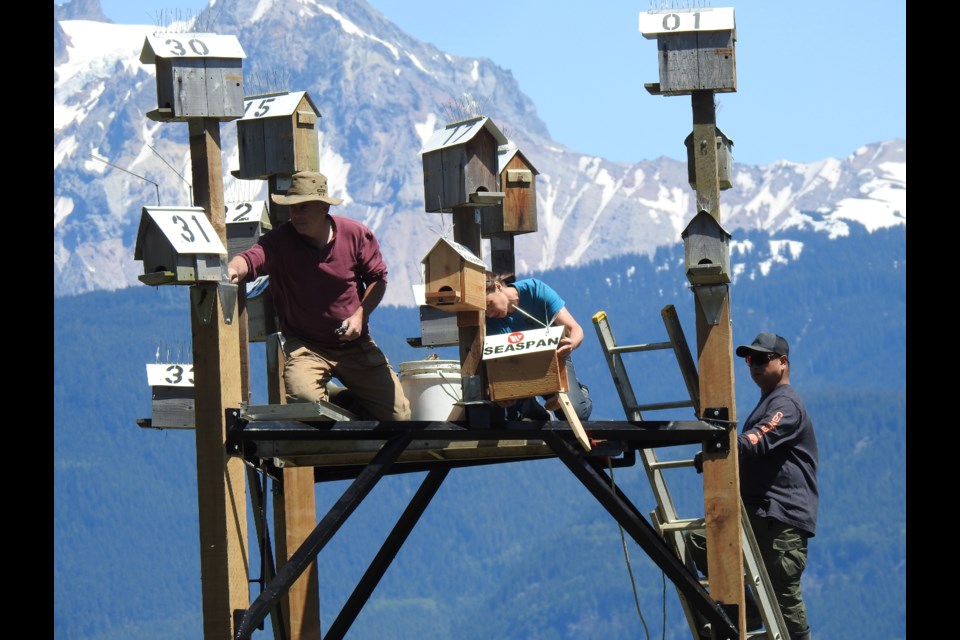As it turns out, housing isn’t only a challenge for Squamish’s human population, but its birds, too.
You may have noticed a new structure pop up on the Squamish Estuary this weekend, intended to house one of North America’s most cherished songbirds, the purple martin.
On Sunday, June 4, the Squamish Environment Society [SES] installed the small structure containing purple martin nest boxes. The structure, funded by North Vancouver-based shipbuilding company, Seaspan, contains 15 nest boxes, plus artwork by Aaron Nelson-Moody, a Skwxwú7mesh Úxwumixw (Squamish Nation) artist.
The nest boxes were previously located atop marine pilings in Howe Sound, but after the society got word that the pilings were scheduled to be removed, project co-ordinator Tiffany Brunke said they quickly had to figure out a relocation plan.
Fortunately, they learned they could install the new structure in the estuary, which can be viewed while walking on the one-kilometre-long Chelem Trail, just off of Spit Road.
Brunke reported that at least two purple martins have already made use of their new home since Sunday.
“We had at least one pair move into the new structure the very next morning after installing,” she wrote in an email to The Squamish Chief.
Before the project was installed, Brunke said they had counted 19 purple martins in the area. Currently, another 15 nest boxes remain on marine pilings.
“[The] plan is to build a new structure to go up in the fall once they’ve migrated back to Brazil to relocate the remaining 15 boxes,” Brunke wrote.
The project started in 2015 when one nesting box was originally installed to help with purple martin recovery in Squamish, according to the society’s website. Since then, several dozen have been added — including five in 2021 that had infrared cameras installed to monitor the birds. Those five cameras, along with three additional external cameras, are now featured on the newly erected structure on the estuary.
The Chief joined the SES for the retrieval of last year’s infrared camera footage. The cameras are set up to take a five-second video every hour, which equated to more than 160 minutes of footage per camera.
Every year the birds make the roughly 22,000-kilometre round trip migration between Brazil and B.C., according to the society. A one-way trip from Brazil to Vancouver takes an average of about 21 days.
Those interested in volunteering or helping to monitor the purple martins can contact Brunke at [email protected] or the SES at [email protected] for opportunities. For more information about the project, visit squamishenvironment.ca.




